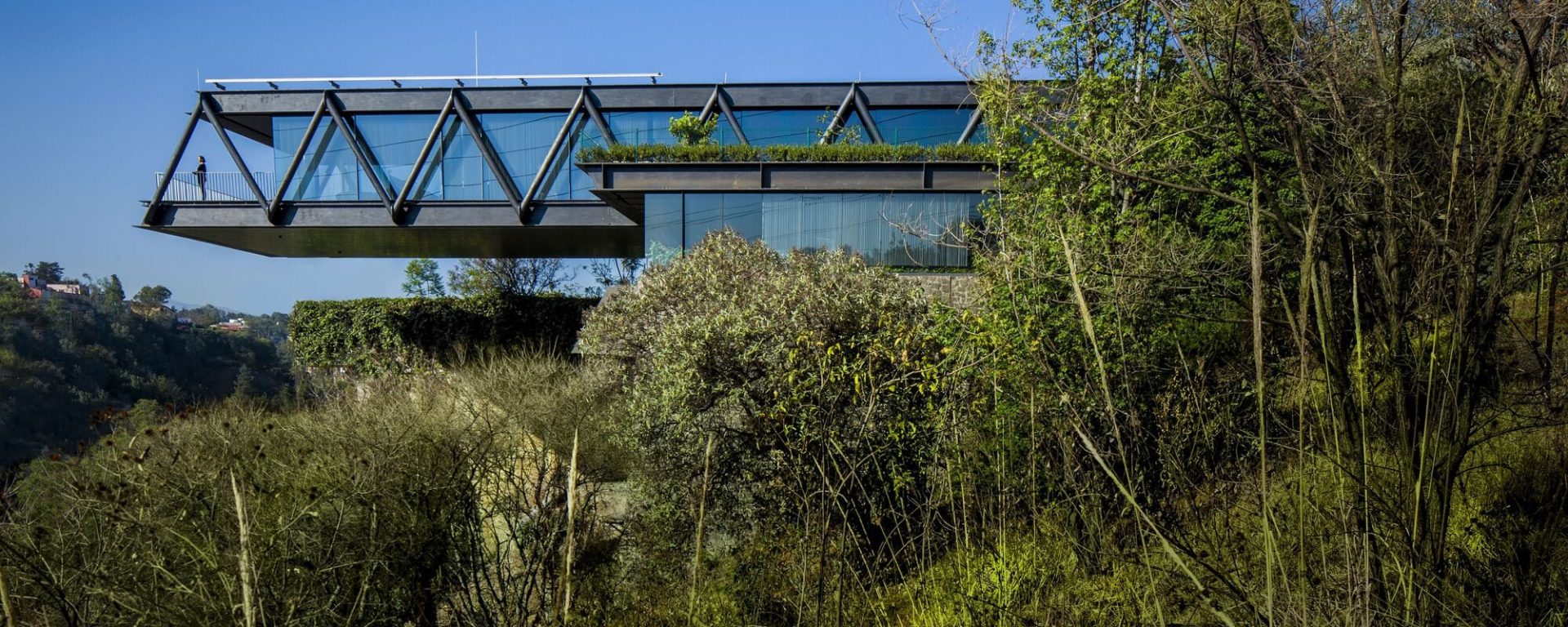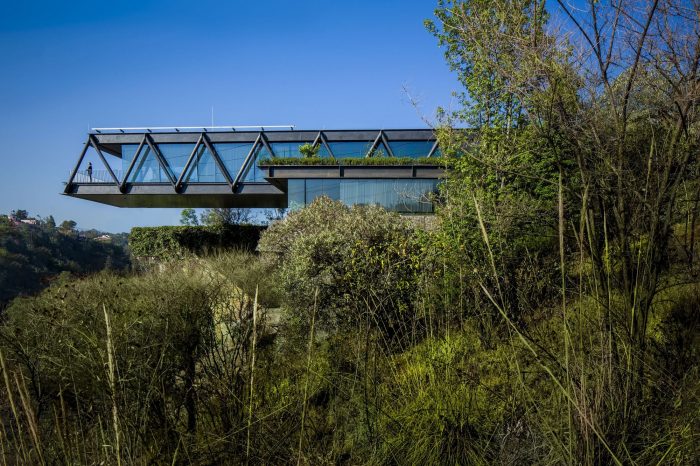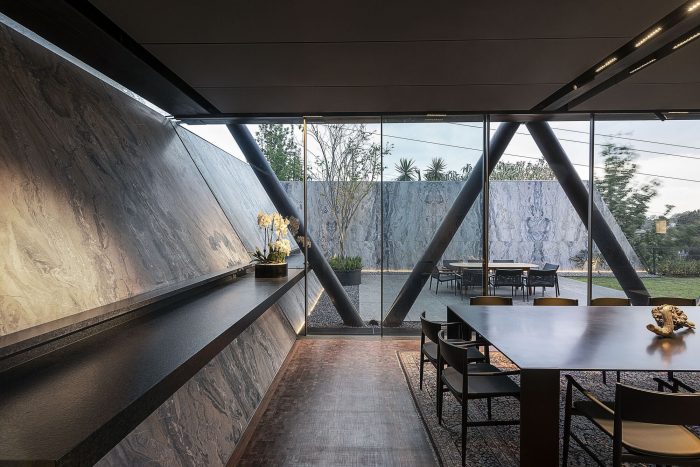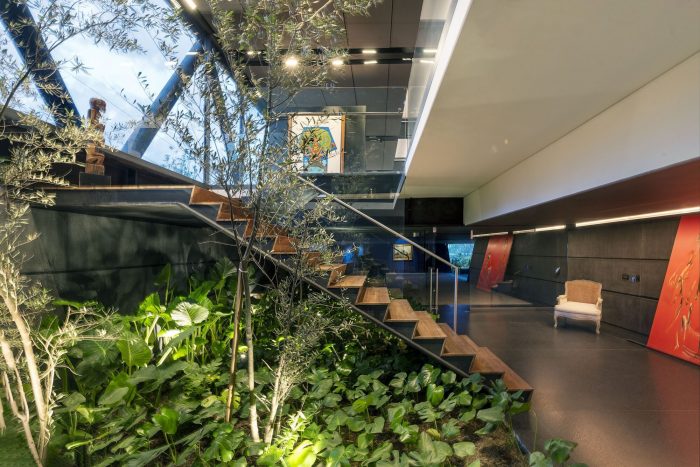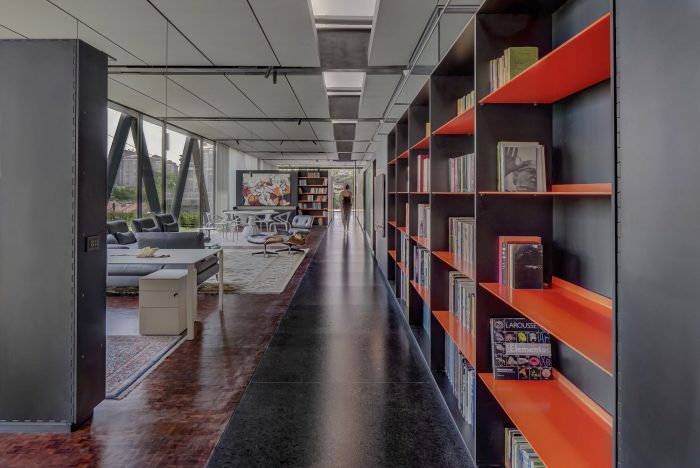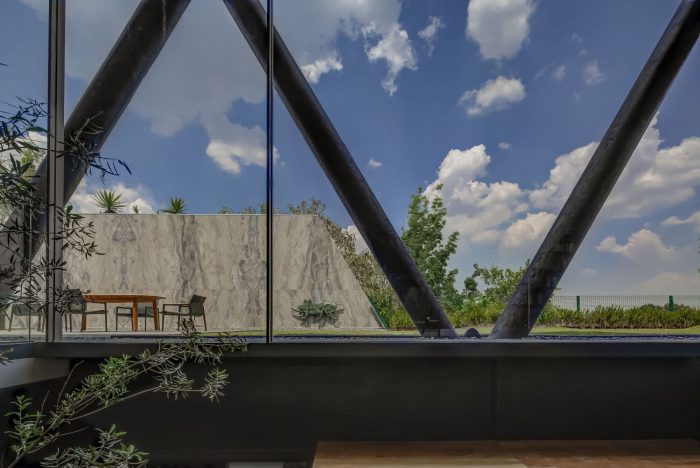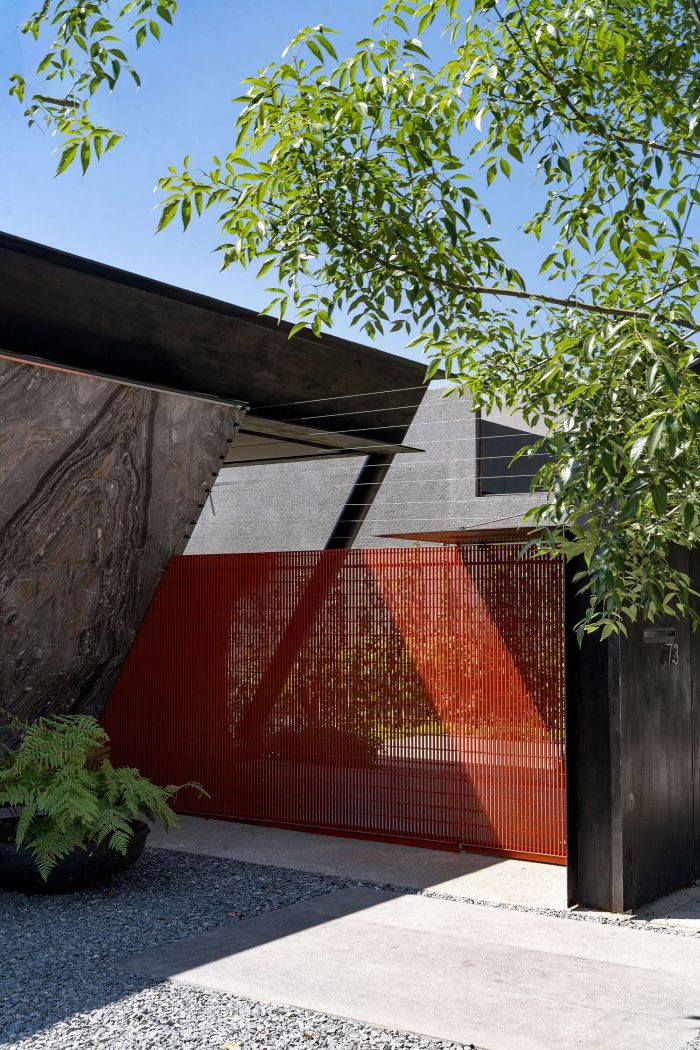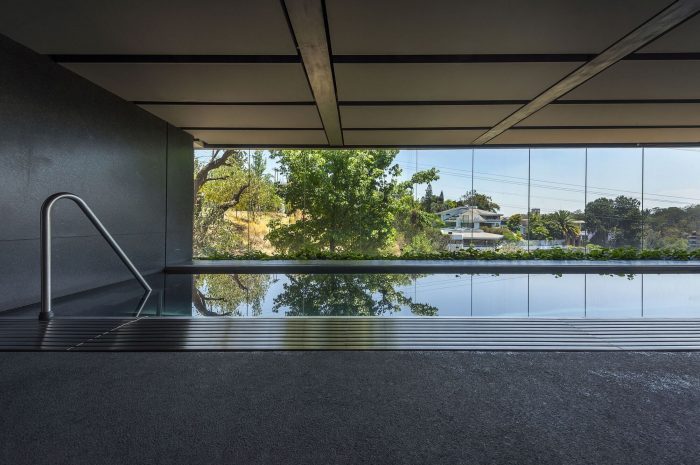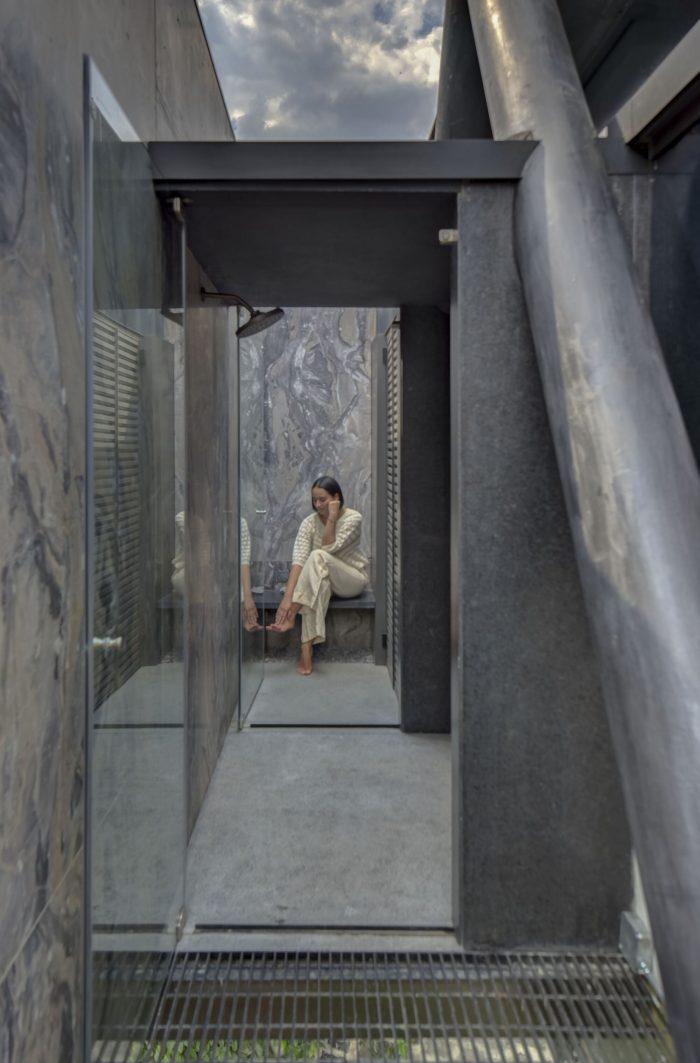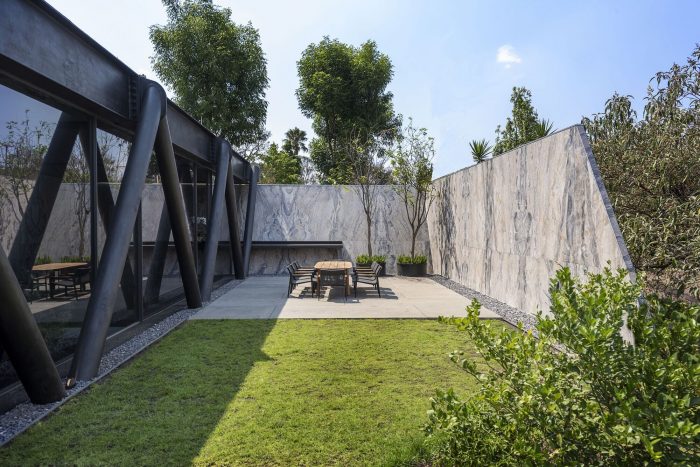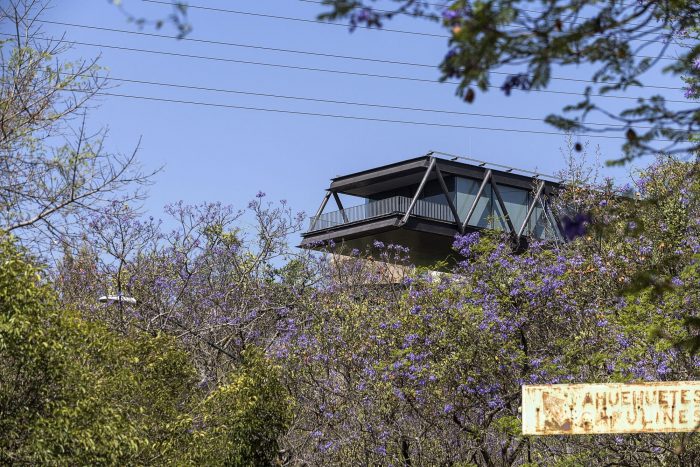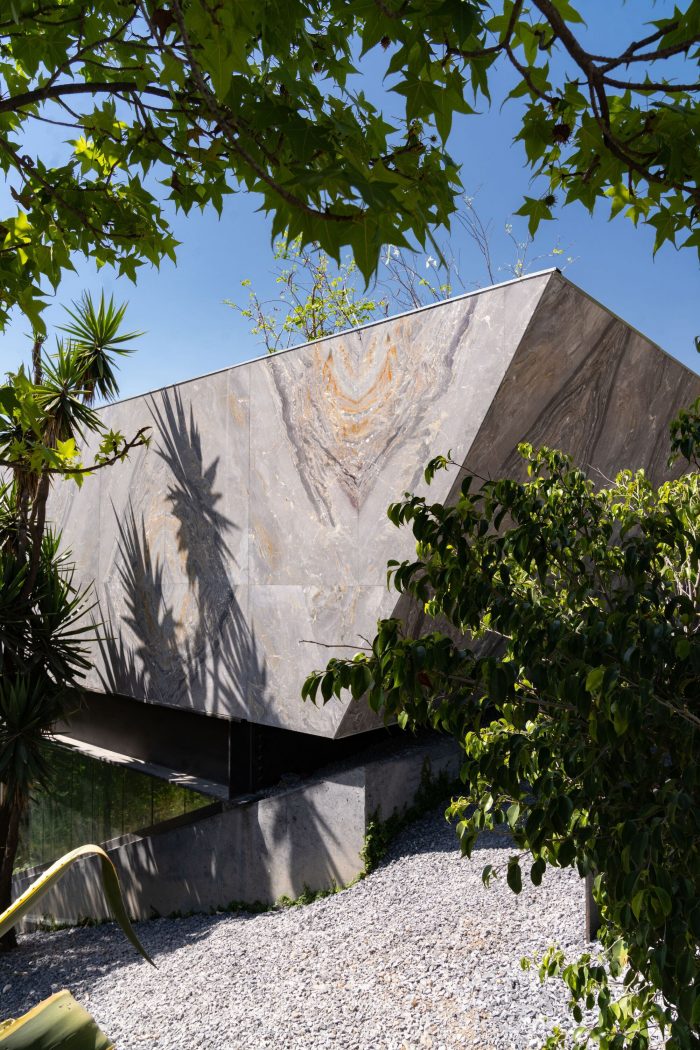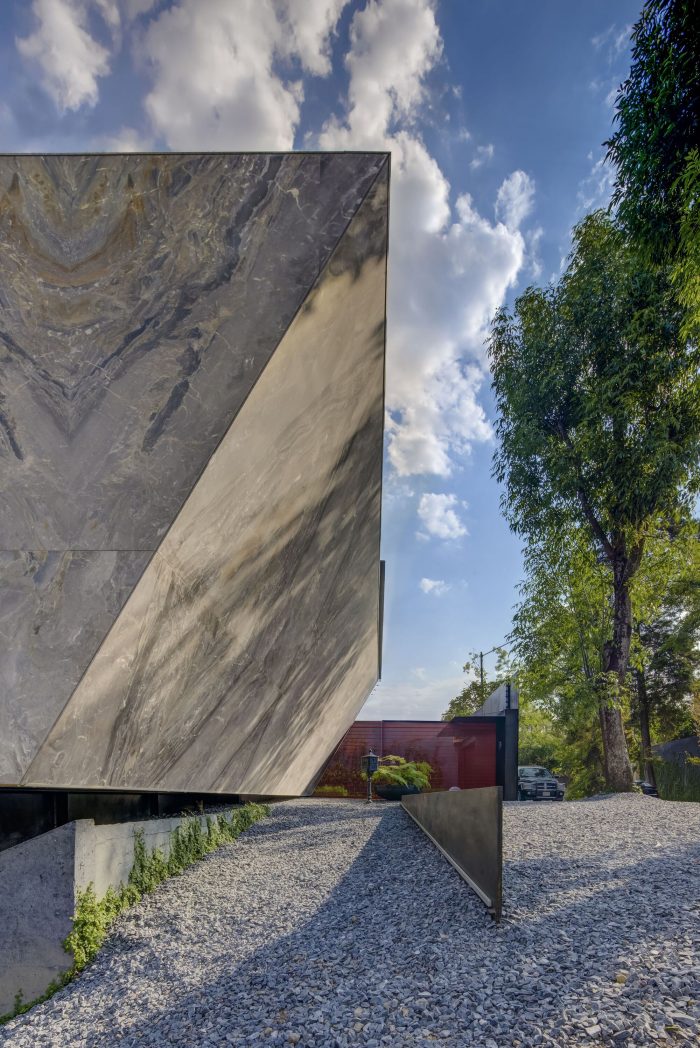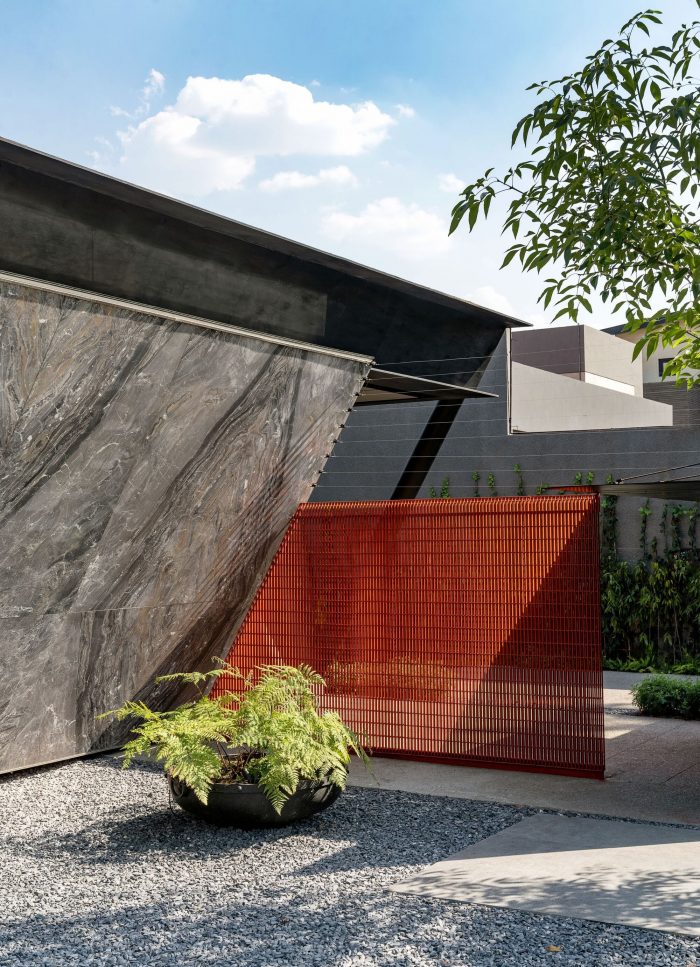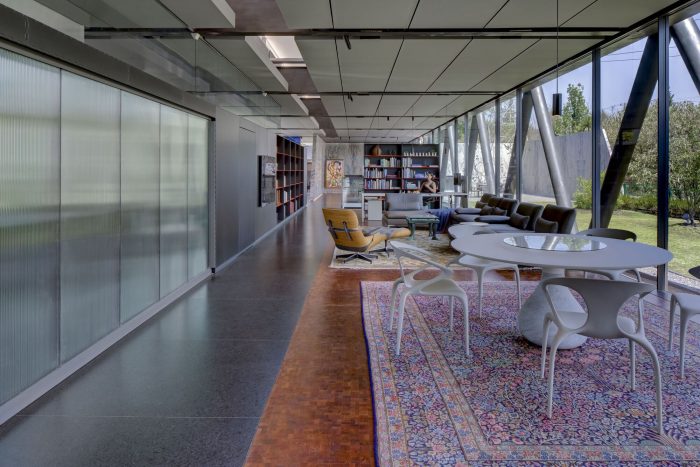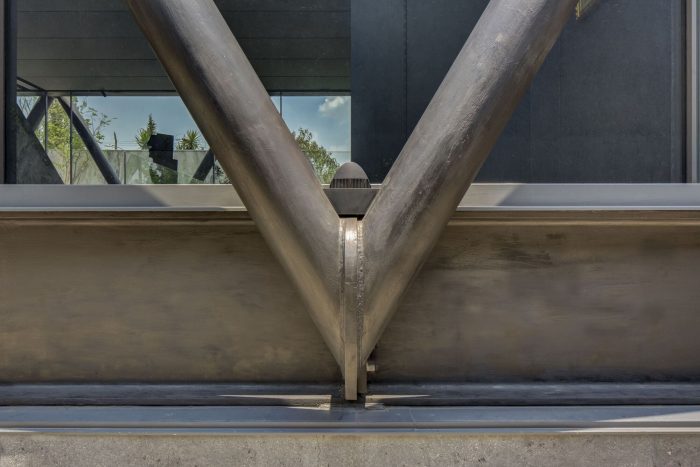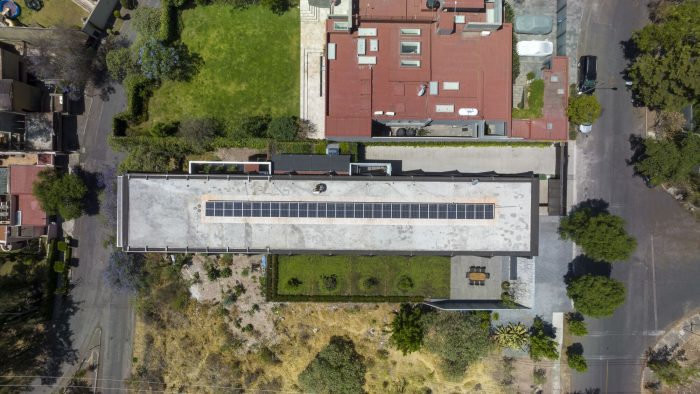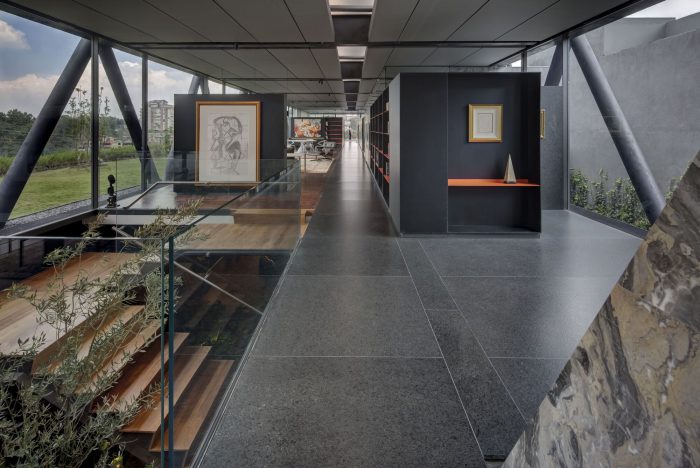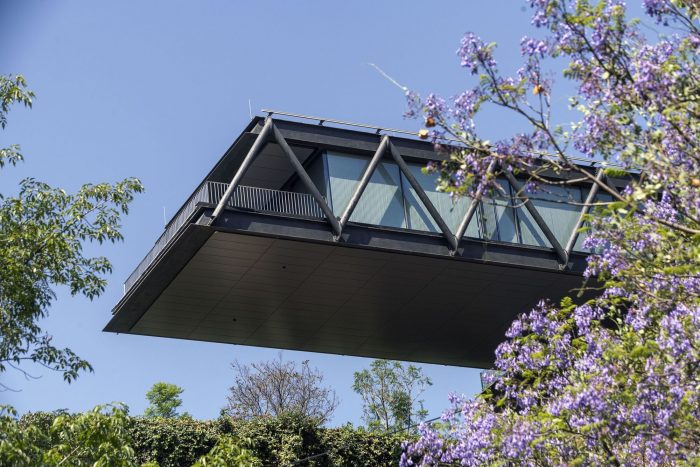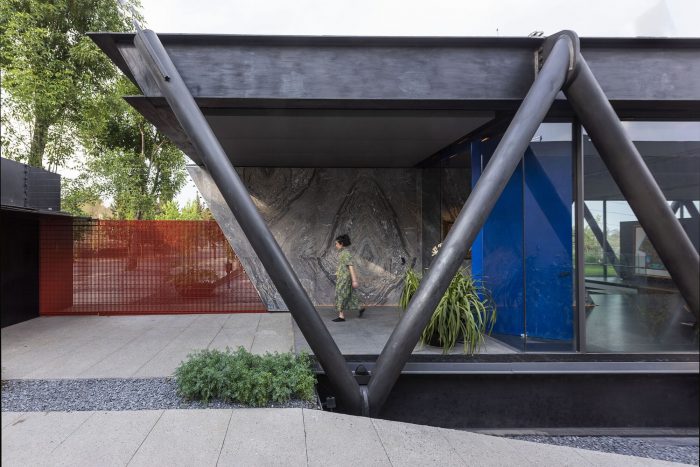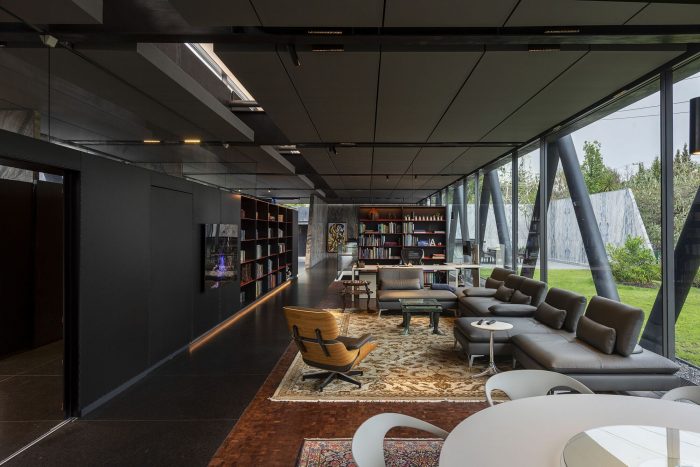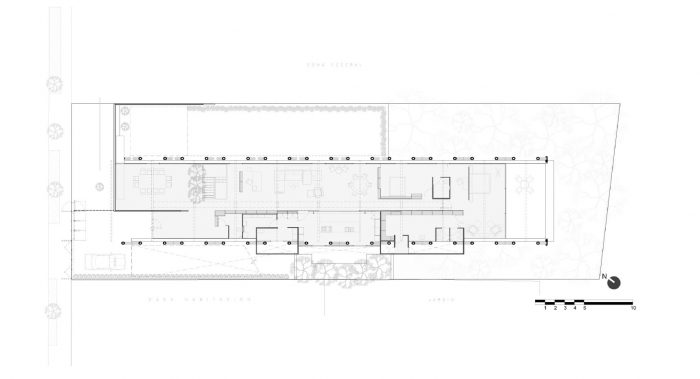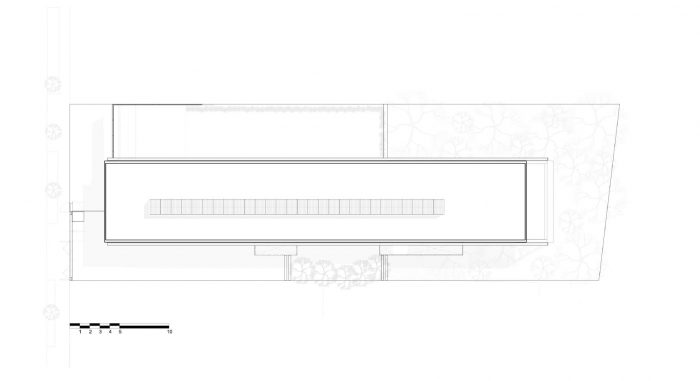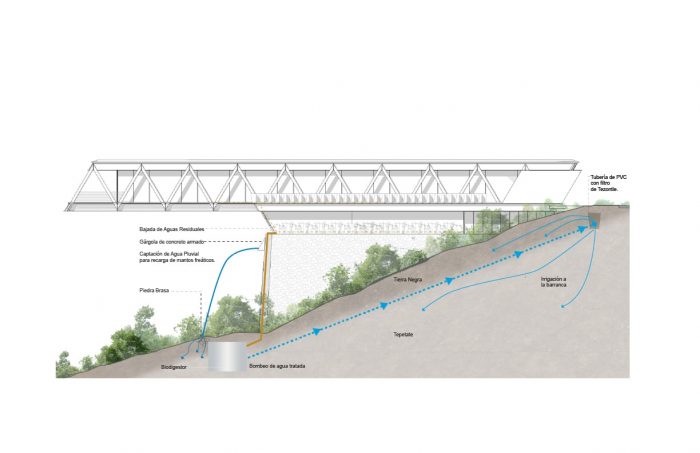墨西哥城的Bosques de las Lomas被设想为森林地区内的一个住宅区。笨拙的建筑开发已经毁坏了山丘,将森林变成了屋顶、街道和带花园的混凝土平台,将雨水排入市政下水道系统,减少了自然水对土壤的渗透,破坏了该地的原始动植物。该地产毗邻联邦储备土地,由于建筑发展和当局的管理不善,森林被砍伐。
Bosques de las Lomas in Mexico City was conceived as a Residential district within a forested area. The clumsy architectural development has deforested the hills, transforming the forest into rooftops, streets, and concrete platforms with gardened areas, draining their rainwater into the municipal sewer system, reducing the natural water infiltration into the soil, destroying the original flora and fauna of the site. The property adjoins a federal reserve land, deforested due to the architectural development and the mismanagement of the authorities.
当我们被邀请参观BCH73场地时,我们发现了一个预先存在的火山石结构,它被设想为一个封闭的石墙,将财产的上半部分夷为平地,使一半的场地低于公路、邻居和他们的边界30米。东部联邦保护区的存在,挡土墙的预先存在,法规的遵守,以及方案本身,帮助我们采取建筑方的决定,将其概念化为一个悬臂块,被有趣的当前和未来的视觉效果所包围(当实施的生态行动成熟时),明确划分服务器和服务空间。
When we were invited to visit the BCH73 site, we found a pre-existing volcanic stone structure, conceived as a containment stone wall that leveled the upper part of the property, leaving half of the site 30 meters below the road, the neighbors, and their boundaries. The presence of the federal reserve to the east, the pre-existence of the Retaining wall, the Regulations compliance, as well as the Program itself, helped us to take the Architectural Party decision, conceptualizing it as a diaphanous cantilever block, surrounded by interesting current and future visuals (when the implemented ecological actions mature), with a clear division of the server and served space.
我们传统的整体工作方式使我们理解了一个悬臂式建筑结构件,有保护和通风的外墙,有节能和发电行动(达到净零系数),有对环境的水和生态意识,获得一个平静和透明的内部空间(项目的方案要求),被光线和自然空气包围,有开放和保护的视觉,有很好的生活质量。
Our traditional holistic way of working led us to the understanding of a cantilevered architectural-structural piece, with protected and ventilated facades, with Energy conservation and generation actions, (reaching the Net-Zero factor), with water and ecological awareness towards the environment, obtaining a calm and diaphanous interior space (programmatic requirements of the project), surrounded by light, natural air, with open and protected visuals, with a great quality of life inside.
通过结合使用由热泵(太阳能)支持的能源基础桩、适当的方向、通风和对环境的保护,以及建筑的适当材料,实现了净零系数。在水的行动方面,安装了一个生物沼气池系统,处理废水以灌溉联邦地区,以及将雨水渗入底土,以改善被破坏的森林地区的动植物条件。
The Net-Zero factor was achieved by the combined use of the Energy Foundation Piles supported by a Heat pump (solar powered), proper Orientation, Ventilation, and Protection towards the environment, as well as the adequate Materiality of the Construction. In terms of water actions, a biodigester system was installed that processes wastewater to irrigate the federal area, as well as the infiltration of the rainwater into the subsoil to improve the conditions of the flora and fauna in the mistreated forest area.
作为重新造林的一部分,决定种植特波桑、莫克特苏马松(Ocote)和鳄梨树(动物群的特定树种)等特有树种,此外还有其他在废弃财产的原有平台上自然诞生的树栖个体。我们非常兴奋地得知,几天前发现了一只Cacomixtle(墨西哥濒危物种),在联邦区徘徊。在施工过程中,实施了结构的预制,在不影响已经被破坏的森林区域的情况下,在峡谷上方20米处发射。
As part of the reforestation, it was decided to plant endemic species such as the Tepozán, the Moctezuma Pine (Ocote), and Avocado trees (specific for the fauna), in addition to other arboreal individuals that had been born naturally on the preexisting platform of the abandoned property. With great excitement, we learned that a Cacomixtle (endangered Mexican species) was found a few days ago, wandering through the federal zone. For the construction process, the prefabrication of the structure was implemented, which was launched 20 meters above the ravine without affecting the already battered forest area.
为谁而建。这座房子被设想为一对退休的专业夫妇的家。将峡谷恢复为公共和景观空间,是对自然和社会环境的回应。为什么?业主到了退休年龄,决定建造一个功能性强且安静的房子,以满足他们年老时的需求。
For whom: The house was conceived as a home for a retired professional couple. The rehabilitation of the ravine as public and landscaped space responds to the physical and social environment. Why: The owners reached their retirement age and decided to build a functional and quiet house that would meet their needs for their older age.
Architects: LBR&A
Year : 2022
Photographs :Frank Lynen, Jaime Navarro
Lead Architect : Benjamín Romano
Structural Engineer : VAMISA
Soil Mechanics : TGC
Mechanical Engineering : CYVSA
Electrical Engineering : Uribe Ingenieros
Hydro Sanitary Installation : GMA
Bioclimatic Consultants : ECOstudio
Lighting Consutlant : Luz y Forma
Geothermal Engineers : Instituto de Ingeniería de la UNAM
Geothermal Field : Pilotec
Joinery : TDC
Construction Contractor : RECAL
Voice And Data : Alfredo Evangelista
Structure Paint : Marcos Lima
Contractor : CORVSA
City : Ciudad de México
Country : Mexico

